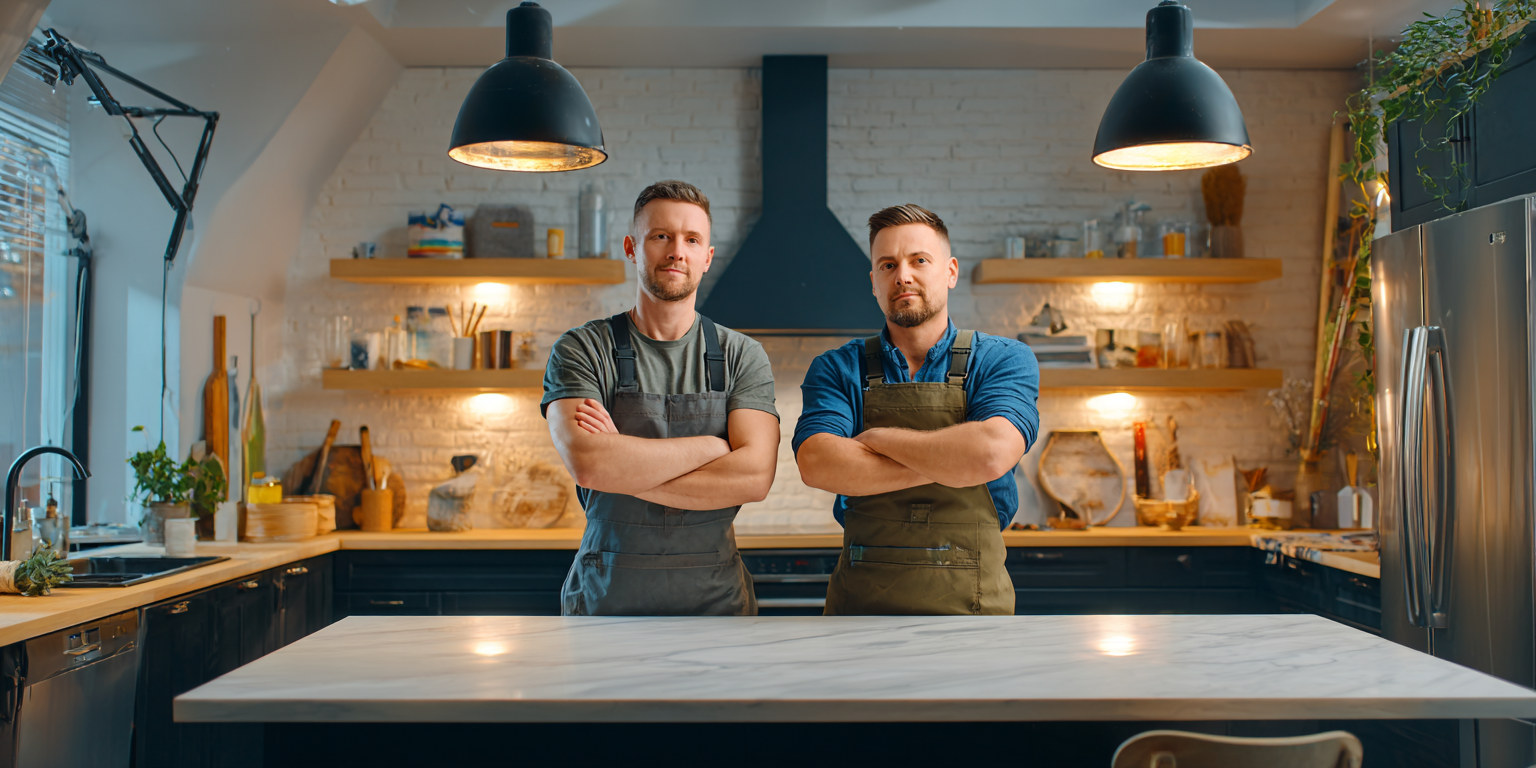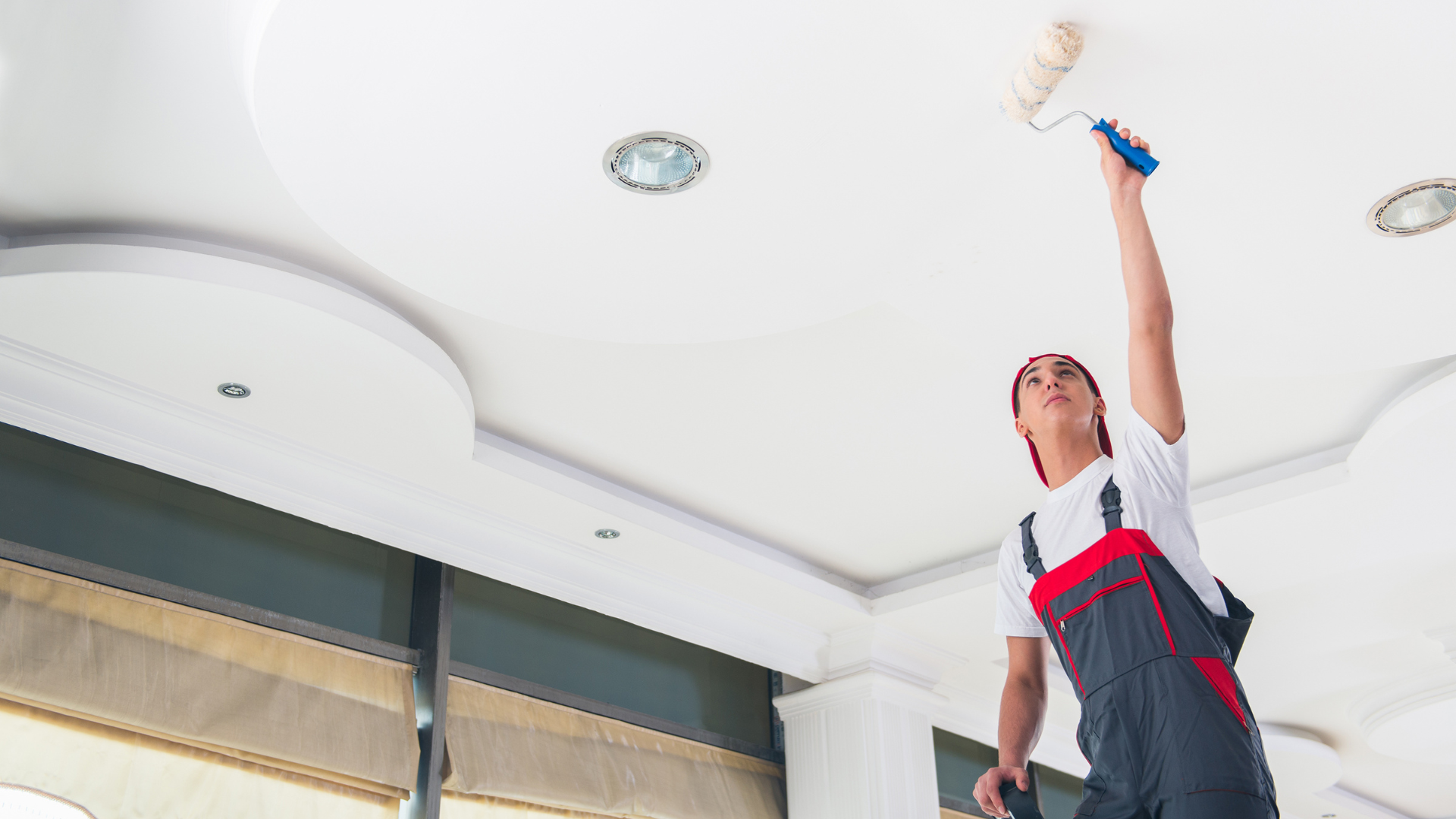Can I Pressure Wash a Painted Driveway?

Pressure washing is a popular method for cleaning driveways, footpaths, and other outdoor surfaces due to its effectiveness and efficiency.
However, when it comes to painted driveways, homeowners often question whether pressure washing is safe and appropriate.
We will look into the nuances of pressure washing a painted driveway, including the potential risks and tips for doing it safely.
Understanding the Risks
Pressure washing has become a staple in maintaining the cleanliness of various outdoor surfaces due to its efficiency in removing stubborn dirt, grime, and other residues.
While it is highly effective, the technique does pose significant risks to certain surfaces, particularly those that are painted.
Here are some of the potential issues associated with pressure washing a painted driveway:
Peeling Paint
One of the most immediate concerns when pressure washing a painted driveway is the potential for peeling paint. The intense pressure generated by the washer can strip away paint layers, particularly if the paint quality is subpar or if the application was flawed. Older paint jobs are particularly vulnerable because they may have already weakened over time due to exposure to the elements. This peeling not only affects the aesthetic appeal of the driveway but may also expose the underlying material, requiring more frequent maintenance and repainting.
Water Damage
Another risk to consider is water damage, which is especially pertinent if the paint surface already exhibits cracks or chips. When high-pressure water penetrates these imperfections, it can get under the paint layer and exacerbate the peeling process. More critically, water infiltration can damage the substrate—whether it’s concrete, asphalt, or another material—leading to structural concerns. For instance, in colder climates, trapped water can freeze and expand, causing further cracking and deterioration of both the paint and the driveway material.
Fading Colours
Continuous exposure to high-pressure water can also lead to the fading of paint colours. The force of the water can gradually degrade the paint’s surface, dulling the vibrant colours that were once a highlight of your property’s exterior. This is particularly true for paints not specifically formulated for outdoor or driveway use. These types of paints may lack the necessary UV protection and resilience required to stand up to the rigors of high-pressure cleaning and environmental exposure, leading to quick and noticeable fading.
Considerations for Homeowners
Given these risks, homeowners need to carefully consider whether to proceed with pressure washing a painted driveway. If the decision is to move forward, it’s crucial to use the right technique to mitigate potential damage:
- Adjust Pressure Settings: Modern pressure washers typically offer adjustable settings to control the water pressure. Setting the washer to a lower pressure can reduce the risk of paint damage.
- Select Appropriate Nozzles: Using a nozzle that spreads the water over a wider area can decrease the intensity of the water impact on any particular part of the driveway, thus protecting the paint.
- Proper Technique: Holding the nozzle at the correct angle and distance (usually at least 30 cm away from the surface) can help minimise direct impact on vulnerable areas.
- Regular Maintenance: Regularly checking and touching up paint can also help extend the life of the paint job and reduce susceptibility to damage from pressure washing.
While pressure washing is an effective cleaning method, its use on painted driveways requires careful consideration and handling to prevent damage to both the aesthetic and structural integrity of the driveway. Homeowners might consider consulting with professionals who can assess the condition of the paint and provide tailored advice on the best cleaning methods.
Assessing Your Driveway: A Crucial Step Before Pressure Washing
Before undertaking any pressure washing on a painted driveway, a thorough assessment of the paint's condition is essential. This initial evaluation not only helps in deciding whether pressure washing is appropriate but also guides the level of caution needed during the cleaning process.
Some important measures to determine the condition of your driveway:
1. Visual Inspection for Surface Integrity
Start by conducting a detailed visual inspection of the driveway. Look for any obvious signs of wear and tear that could influence the decision to pressure wash:
- Peeling or Flaking Paint: Indicates that the adhesion of the paint to the driveway surface is failing. Pressure washing may exacerbate this issue.
- Cracks and Chips: Small cracks and chips can become entry points for water under high pressure, leading to further damage both to the paint and the substrate.
- Fading Colours: Faded paint may suggest that the surface is weathered and potentially more fragile, making it susceptible to damage from high-pressure water.
2. Check for Moisture Issues
Moisture trapped beneath the paint can cause bubbling and further peeling. Press on areas where the paint seems to bulge or appears uneven to feel for softness or give, which might indicate underlying moisture problems.
3. Age of the Paint Job
Consider the age of the paint job. Paint that has been on the surface for many years may not have the resilience of a newer coat. Older layers of paint are typically more prone to damage from pressure washing due to the breakdown of the paint’s chemical structure over time.
4. Type of Paint Used
Identify, if possible, the type of paint used. Certain types of paint are more durable and suited for outdoor conditions and high-traffic areas like driveways. For example, epoxy-based paints are tougher and more resistant to pressure washing than acrylic paints, which are more likely to sustain damage.
5. Environmental Factors
Evaluate the environmental factors that might have affected the paint. Has the driveway been exposed to excessive sunlight, harsh weather, or chemicals such as oil and gasoline? These factors can degrade paint faster, making it more vulnerable during pressure washing.
6. Testing a Small Area
If the paint appears in good condition but you’re still unsure, it’s wise to test wash a small, inconspicuous area. Use low pressure and observe how the paint reacts. If there are no negative effects, you can gradually expand to more visible areas, taking care to continuously monitor the impact.
Decision and Precautions
Following your assessment, if the paint is generally in good condition and the test wash doesn’t cause damage, pressure washing might be suitable with careful execution. However, if your evaluation uncovers any concerns regarding the integrity of the paint, reconsider using high-pressure water. Alternatively, you could use gentler methods such as soft washing or manual cleaning with a soft brush and soapy water.
By meticulously assessing the paint on your driveway before pressure washing, you can make an informed decision that protects your property's aesthetic appeal and structural integrity. This approach ensures that cleaning enhances your home’s exterior rather than causing unwanted damage.
Tips for Safely Pressure Washing Your Painted Driveway
If you determine that your driveway can withstand a pressure wash, follow these tips to minimize any potential damage:
- Use the Right Pressure: Not all pressure washers are created equal. Use a machine that allows you to adjust the pressure. Start with a lower setting and only increase if necessary.
- Choose the Correct Nozzle: Use a wider-angle nozzle to disperse the pressure over a larger area, reducing the intensity of the water impact on any particular spot.
- Maintain a Safe Distance: Hold the pressure washer nozzle at least a foot away from the surface of the driveway and adjust based on how the paint responds.
- Test a Small Area: Before fully committing, test the pressure washer on a small, inconspicuous area of the driveway to see how the paint holds up.
- Use Gentle Cleaning Solutions: If dirt and stains are not coming off with water alone, use a mild, environmentally friendly cleaning solution designed for painted surfaces.
Alternatives to Pressure Washing a Painted Driveway
Pressure washing, while effective, isn't always the best choice for every surface, particularly painted driveways where the risk of damage can be high. Fortunately, there are gentler alternatives that can still achieve excellent cleaning results without compromising the integrity of the paint.
Here are two effective methods to consider:
1. Soft Washing
Soft washing is a less aggressive method of cleaning that can be particularly beneficial for painted surfaces. It differs from traditional pressure washing in a few key ways:
- Lower Pressure: Soft washing uses a much lower water pressure compared to standard pressure washing. This reduced force minimises the risk of peeling or chipping the paint on your driveway.
- Cleaning Solutions: This method relies heavily on cleaning agents rather than forceful water pressure. These solutions are typically biodegradable and designed to loosen dirt, grime, algae, and mildew, allowing them to be washed away with gentle spraying.
- Longer Lasting: Because soft washing also targets and kills spores and mildew at their source, it can have a longer-lasting cleaning effect compared to high-pressure water blasting alone.
The technique involves applying a cleaning solution with a low-pressure spray, letting it sit for a period to break down the dirt and organisms, and then rinsing it off gently. It's particularly suited for painted surfaces that may be more susceptible to water damage.
2. Manual Cleaning
For areas with lighter dirt accumulation or for those who prefer a more hands-on approach, manual cleaning is an excellent option. This method allows for precise control over the cleaning process and can be very effective with the right techniques:
- Tools Needed: A soft-bristled brush is ideal for this type of task. It's tough enough to scrub away dirt but gentle enough not to scratch or damage the paint.
- Cleaning Solution: Use a mild detergent mixed with water. For an eco-friendly option, you can mix water with white vinegar or baking soda, which are gentle on paints but effective at cleaning.
- Technique: Dip the brush in your cleaning solution and scrub the driveway in sections. Work in gentle, circular motions to lift the dirt without harsh scrubbing.
This method is labour-intensive but allows for careful handling of sensitive areas, especially where the paint might be aging or showing signs of wear.
Tailoring the Cleaning to Your Needs
When dealing with painted driveways, the choice of cleaning method should be dictated by the condition of the paint and the type of dirt or debris present.
For regular maintenance, manual cleaning might be sufficient and can prevent the buildup of dirt that requires harsher methods. For more extensive cleaning, soft washing offers a middle ground, providing the effectiveness of pressure washing without the associated risks.
By choosing the appropriate cleaning method, you can maintain the aesthetic and structural integrity of your painted driveway, ensuring it remains a welcoming and valuable part of your home’s exterior.
Pressure washing a painted driveway is possible, but it requires careful consideration and preparation. By understanding the risks and following best practices, you can ensure that your driveway is cleaned effectively without damaging the paint.
Always weigh the condition of your driveway and the capabilities of your equipment before proceeding. If in doubt, consulting with a professional or opting for gentler cleaning methods might be the best approach.





